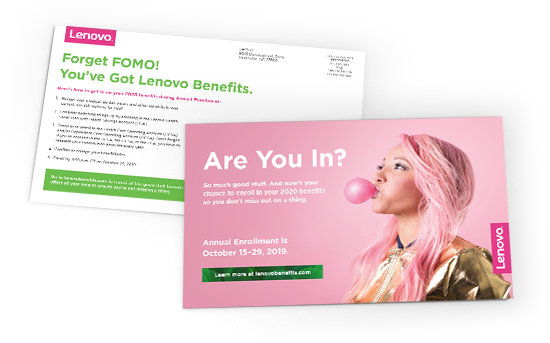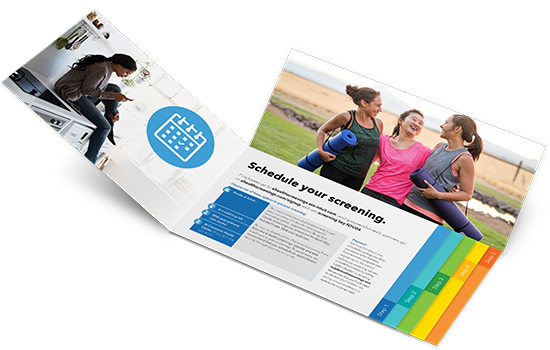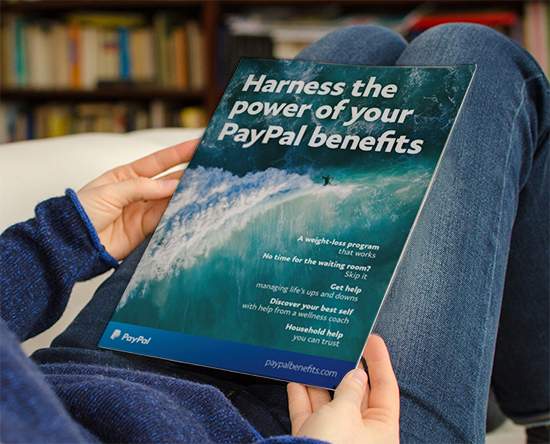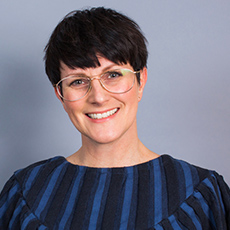
Adding Print Materials to Employee Communications Drives Action
I’m a library lover. Well actually, I’m a print lover. Even during this strange year of sheltering in place during COVID-19, I’m just not willing to read books on a digital device. And I’ve tried twice. After agonizing over and purchasing a very fancy tablet to read on, I hated it. There are many different opinions about paper versus digital, but let’s face it, most of us hope print will never die. Print is tangible. It’s physically shareable. And it can feel more personal. That’s why printed materials should be a part of your communications mix.
Because many employees work online all day, one way to relax is to reach for a print piece, like a newspaper or physical book, when their workday is finished. After eight or more hours on the computer, I want to get away from the screen to give my eyes and body a break. I like the smell and feel of paper, I love flipping through a beautiful magazine and being taken on a journey—and I’m not alone. According to the American Press Institute, 61% of U.S. consumers prefer their news in print. Tired eyes that need a break from the screen still have some energy left to read a print piece, like your enrollment newsletter or deadline reminder.
Printed materials can also leave a greater impression than digital. In the first study looking at the differences between physical and digital marketing materials using neurophysiological methods, Millward Brown1 found that physical media left a “deeper footprint in the brain” compared to their digital counterparts, which is invaluable when communicating to your audience about their benefits.
In addition, if a portion of your population doesn’t have access to a computer or mobile device during their workday, print may be the only way to reach them (not to mention family members at home). This is crucial in communicating about benefits, particularly during annual enrollment and new hire onboarding, when we know many spouses and partners are involved in making decisions. But this doesn’t mean you should abandon your digital media. The Millward Brown study also found that combining print with digital media helps to reinforce your message—the more channels you use, the greater chance your message will make an impression.
Print is very effective for targeting specific populations. A print piece targeted to an individual can be much more attention-grabbing2 than something that looks like a mass mailing. More personally relevant information can drive action and deliver results. It’s also a great way to show off your brand and benefits offering, which builds trust and reinforces why you’re a great organization to work for.

A postcard is the perfect tool for delivering a specific message.
If you’re print-averse due to cost, you still have options. A small postcard is the perfect tool for delivering a specific message, as well as driving traffic to digital resources like your benefits website. Printing with two colors, or duotone, instead of four colors, can reduce costs and still create a visually impactful piece.
Worried about not being green? There are great environmentally friendly options for print.
Just remember, the most effective pieces make it easy for the reader to take in information. Plenty of white space, scannable headlines, and bite-size chunks of content keep the important messages front and center. Also, using unexpected sizes and formats can make your print piece stand out from other mail. Some of our favorites include die cuts, heavy use of color, and over- or under-sized mailers.


Unexpected sizes and formats will make your print pieces stand out.
So are you ready to give print a try or bring it back to your communications mix? We hope so!
1 Millward Brown, “Using Neuroscience to Understand the Role of Direct Mail,” 2009.
2 G.W. Humphreys and J. Sui, “Attentional control and the self: The Self-Attention Network (SAN),” Cognitive Neuroscience, Vol. 7, 2016.
Work with Us
We partner with organizations that value their people first. Let’s talk.

Caroline Lowry, VP Senior Project Manager, has been part of the Segal Benz team since 2006 and currently manages some of our largest engagements.
